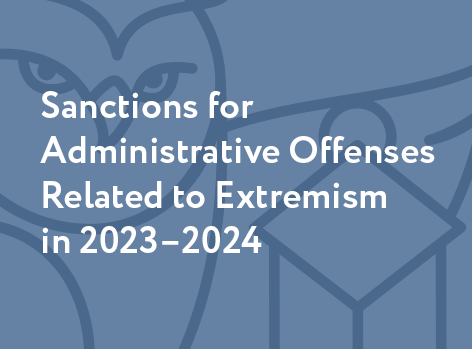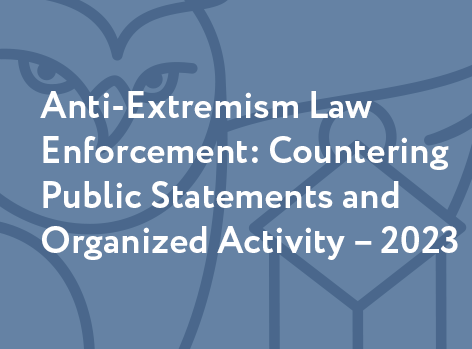The following is our monthly review of instances of xenophobia and radical nationalism, along with any government countermeasures, for September 2025.
In September 2025, according to our data, 13 people were targeted in violent hate crimes. Since the beginning of this year, we have recorded 220 victims. Six victims of such attacks were killed.
An attack on a taxi driver and a migrant worker by a group of 15-year-olds in Vladivostok caused a media outcry. A video of the beatings was shared on local social media and Telegram channels. After the Uzbekistan Consulate General sent a note to Russian law enforcement agencies demanding action, the Investigative Committee reported that the attackers had been identified, with one of them detained, while two remain wanted.
We also note the attack in Moscow on RusNews journalist Konstantin Zharov and a 17-year-old teenager who were returning with others from an evening of letters to political prisoners. The assailants were upset by their long hair and Yabloko party badges; the victims were hospitalized.
We learned of three acts of xenophobic vandalism committed in September. In the Orenburg region, a wooden cross was set on fire near the Church of St. George the Victorious in Sol-Iletsk. In Adygea, a perpetrator threw a pig's head near a mosque in the village of Kozet. In the Chelyabinsk region, teenagers first threw a pig's head near a mosque in the village of Chesma, and a little later, a masked teenager in black set fire to the same mosque. These latest acts, according to one far-right Telegram channel, may have been connected to the neo-Nazi organization NS/WP, which is recognized in Russia as a terrorist. In total, we have learned of 39 acts of xenophobic vandalism since the beginning of the year.
On September 7, the feast day of the Synaxis of Moscow Saints, a religious procession led by Patriarch Kirill took place in Moscow from the Cathedral of Christ the Savior to the Novodevichy Convent, attracting approximately 40,000 participants (or more). Such a large church procession had not been held in the capital for many years. Russian nationalist organizations participated: the "Russian Community," Russian Druzhina, Brotherhood of Academicians, Northern Man, Doubleheaded Eagle, Forty Forties, Society. Future, NOD, the Union of Orthodox Banner-Bearers, and several members of Right Russia party. According to SOVA Center data, the total number of nationalists at the procession was approximately 2,000, of which approximately 1,500 were from the "Russian Community." Uniform T-shirts and the impressive formation agreed upon with the organizers created the impression among some observers that the procession was essentially a Russian March. But the difference is still very large: political slogans or even imperial flags were not allowed and were extremely rare, the share of nationalists did not exceed five percent, and they were not the organizers.
In St. Petersburg, the traditional religious procession took place along Nevsky Prospekt on September 12 in honor of the translation of the relics of Prince Alexander Nevsky, and attracted approximately the same number of participants as the Moscow procession. Around 200 nationalists from the regional branches of the “Russian Community” of St. Petersburg and Veliky Novgorod, the Northern Man, the Russian Imperial Movement, and the Imperial Legion took part in the procession. Unlike the Moscow event, the St. Petersburg procession featured numerous imperial flags: they were permitted last year as well.
Nationalists' participation in religious processions in other regions was much more modest. On September 5, in Stavropol Krai, Cossacks of the Terek Cossack Society, along with the “Russian Community” of Zheleznovodsk and Inozemtsevo, participated in a horseback religious procession in honor of the Apostle Bartholomew, which began in the village of Inozemtsevo and ended in Georgievsk. Judging by photographs, 12 people from the “Russian Community” participated. On September 11, in Omsk, four people from the “Russian Community” took part in a vehicle-borne religious procession dedicated to the 800th anniversary of Alexander Nevsky's birth. On September 21, in Orenburg, several members of the Northern Man and the “Russian Community,” carrying imperial flags, participated in a religious procession with the Tabyn Icon of the Mother of God.
On September 12, just before the religious procession, the founding conference of the International Anti-Globalization League "Paladins" was held at the Mariinsky Palace in St. Petersburg. Several far-right organizations from Spain, Mexico, France and other countries participated. The conference was opened by Konstantin Malofeev and Alexander Dugin.
The “Russian Community” continued its vigilante activity in September, conducting its own traditional raids and participating in anti-migrant police raids on migrants' residences and workplaces. In September, the “Russian Community” conducted an average of 17 such raids per week. Other organizations conduct far fewer raids.
Raids, though they have been happening less often, have not been limited to those targeting migrants. In St. Petersburg, 15 members of the "Russian Community" stormed the Gedonist café, where a Vampire Ball costume party, organized by beauty blogger Rada Russkikh, was taking place. Far-right activists threatened violence against the guests, promised to visit Russkikh at her home, “touched female employees' private parts, and threatened to remove the barista's kilt.” According to the “Russian Community,” the event had a "satanic aura," and "the Satanic movement is recognized as extremist and banned in the Russian Federation." After the organizers called the police, the far-right activists fled.
A strange incident occurred in late September in the Chelyabinsk region. In September, the website Evening Troitsk. Digest reported that several people held in a temporary detention facility in the city of Troitsk reported beatings carried out not only by police officers but also by activists from the “Russian Community.” Prisoners were forced to sign contracts for the Special Military Operation, their personal belongings were confiscated, and packages from relatives were withheld. One of the young men managed to inform his family about the incident, while the other sent a letter detailing the incident. The relatives then filed complaints with law enforcement. The “Russian Community” itself denied any connection with the incident, and asserted that attributing the beatings to its activists was a provocation.
The Telegram channel Mnogonatsional which is followed by the “Russian Community” and the People’s Call, came out in defense of ethnic Russian children who had immigrated to Russia from other countries and were unable to enroll in schools due to difficulties with the Russian language exam. This gave nationalists grounds to accuse officials of Russophobia. The nationalists circulated a video of the children appealing to Vladimir Putin to help them get into school. Tellingly, children “who know no language other than Russian” are unable to pass the very Russian language exam for children of migrants that nationalists had so lobbied for. Moreover, the nationalists blame not even the exam's creators, but rather abstract “heartless officials.”
We are unaware of any sentences handed down in September for violent hate crimes. Since the beginning of the year, we have learned of 33 sentences against 152 people for xenophobic violence.
However, we learned of four cases against 11 people opened in September for violent hate crimes.
We learned of one conviction for xenophobic vandalism in September, bringing the total number of convictions to 12, against the same number of people, since the beginning of the year. We also learned of three cases, against four people, brought for xenophobic vandalism in September.
See another review of anti-extremist law enforcement in September 2025.




